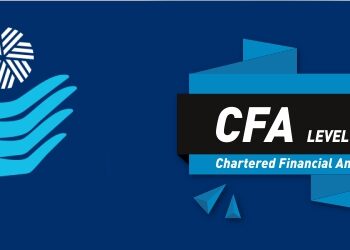مدیریت ریسک اعتباری
(وبینار)
تاریخ دوره:
مدت دوره: ۳ ساعت

امروزه باتوجه به رشد روزافزون رقابت بین بنگاههای اقتصادی و افزایش قدرت چانهزنی مشتریان، فروش اعتباری و مدتدار به عنوان یک راهبرد جذب مشتری انکارناپذیر مطرح شده است. این دوره قصد دارد تا با ارائه چارچوبهای عملی مبتنی بر بهروزترین روشهای اعتبارسنجی مشتریان، به کسب و کارها جهت مدیریت ریسک اعتباری ناشی از مشتریان کمک نماید.
مخاطبان دوره
مدیران و کارشناسان:
- اعضای محترم هیئتمدیره و مدیران ارشد بانکها و مؤسسات مالی و اعتباری.
سرفصلهای دوره
Syllabus
> Loan life cycle under Risk Management across Retail, Small Business and Commercial Business lines;
> Implementation of IFRS9 guidelines;
> Risk Appetite Framework;
> Disclosures & Senior Credit Committee Approval process.
Background
Loan Lifecycle under Risk Management across Business lines (Retail, Small Business & Commercial)
In recent years, Banks have looked at internal processes and teams to streamline the loan lifecycle and reduce cost structures to provide competitive offers to customers. In each of the lifecycle stages we will discuss initiatives to achieve those goals and review the importance of data analytics in the organization.
Loan Lifecycle Stages:
Application: From targeting customer niches (defining specific marketing strategies) to steps in establishing originated accounts.
Processing: Review submission & verification of account to comply with anti-money laundering standards and reduce operating risks.
Customer Management: Review the different stages or processes to maintain and control the customer relationship from underwriting, approving the loan to review cross selling opportunities.
Collections: In the event of customer defaulting payments, review treatments should be deployed to encourage payment and restore customers to non-delinquent status
Implementation of Forward-looking Provisions for Credit Losses (IFRS 9 Standards): With the adoption of International standards in 2018 for credit losses allowance by Canadian Banks, a more detailed and comprehensive process was created to manage credit risk exposure to economic cycles. In the proposed review, we will provide a walkthrough on the main items in the implementation of this credit losses allowance standard.
Expected Credit Losses (ECL): Review different approved models to calculate allowance for credit losses depending whether the credit risk of the borrower has increased significantly since the exposure was first recognized.
Loan portfolio segmentation: Review Risk Stage segmentation based not only on delinquency status and original exposure; but also on determining if an account shows significant increase in risk.
Significant Increase of Risk (SIR): Analyze what happens with allowance when there is a significant increase in risk since the time of origination to reflect the present value of all losses projected over the life of the instrument instead of the 12-month provision.
Macroeconomic Outlook: Review how Forward-Looking Indicators (FLI) are selected, modeled and included in the calculation of the allowance to capture impact of performance of macroeconomic factors.
Model Validation & Stress Testing: Review tools frequently used to validate model prediction accuracy and completeness; as well as; recommend testing scenarios to analyze Bank’s impact exposure.
Management Reporting: Review governance process to effectively manage the calculation and reporting of allowance and provisions for credit losses for different stakeholders in the organization. Review suggested policies for Senior Credit Committee overview.
Financial Disclosure and Audit: Review control framework to certify trustworthiness and validity of financials reported internally and externally.
Risk Appetite Framework (RAF): Review how the Bank articulates the amount and types of risk the Bank is willing to take to meet its strategic objectives. Its approval process with Board of Directors and Credit Risk Appetite (CRA) Limits determination.
مدرسین دوره
گروه مالی و مدیریت سرمایهگذاری شریف همواره افتخار همکاری با بهترین اساتید و متخصصین در ایران را داشته و دارد.
Saravanakumar Sivasithamparam
> MA. in International Economics
> M.Sc. in Economics
> Scotiabank, Director of Canada Provisions, Canada.
> Scotiabank, Senior Manager, Financial Analytics and Planning, Canada.
Scotiabank, Senior Manager, Financial Management & Reporting, Canada.
Jaime Willars
> MA in Economics,
> Master of Business Administration
> Scotiabank, Director of International Provisioning and Reporting, Canada.
> CITI Bank, AVP. Finance, Planning, and Analytics, USA.
> CITI Bank Mexico, AVP. Finance, Planning, and Analytics, Mexico.
Dr. Shahrivar
> PhD in Economics,
> M.Sc. In Banking and Finance
> Maxo Financial, Director of Market Strategies, Canada.
> Scotiabank, Director of Small Business Provisioning, Canada.
> JDI, Investment, Cost-benefit Analyst, Canada.
> Eastern Mediterranean University, Senior Instructor in Finance and Economics, Cyprus
چگونگی ثبتنام
آیا میدانستید این دوره به صورت درونسازمانی هم برگزار میشود؟
میزان سرمایهگذاری در دوره ۳۲/۰۰۰/۰۰۰ ریال میباشد.
جهت رزرو و ثبتنام در این دوره آموزشی با دبیرخانه تماس حاصل فرمایید.
شرایط انصراف و عودت وجه:
تا یک هفته پیش از آغاز دوره، با کسر ۳۰% از مبلغ ثبتنام و پس از آن، تنها با معرفی فرد جایگزین امکانپذیر خواهد بود.



